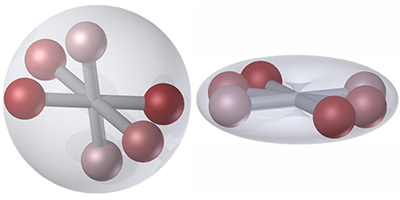Making Molecules Stand to Attention
Cooling molecules to millikelvin temperatures enables the study of molecular interactions in purely quantum regimes. The relative orientation between molecules can have a profound effect on how they interact, affecting, for instance, their chemical reactivity. Johannes Hecker Denschlag and colleagues from the University of Ulm, Germany, have now demonstrated a technique to control the alignment of ultracold molecules, trapped in a 3D optical lattice, by preparing them with an initial rotational spin. The technique opens the door to ultracold-molecule experiments that could lead to new methods of controlling chemical reactions.
The authors trapped a set of diatomic rubidium molecules ( Rb2) in the 3D optical lattice formed by three lasers with orthogonal polarizations. The molecules were spin-polarized to set the molecular-axis orientation, following a previously demonstrated laser-based scheme (see 25 September 2008 Viewpoint). This brought them into a specific rotational state. Two sets of rubidium molecules were prepared: with zero angular momentum (nonrotating) and with two quanta of angular momentum. In an applied magnetic field that sets the quantization axis, the molecules aligned differently based on their initial rotation. The group derived the molecular orientations with respect to the lattice by measuring the polarizability of the molecules. The experiments showed that nonrotating molecules were randomly oriented, while those with two rotational quanta were aligned along the direction of the magnetic field, resulting in an ensemble of fifteen thousand molecules at 1 microkelvin, all pointing the same way.
This research is published in Physical Review Letters.
–Katherine Wright





